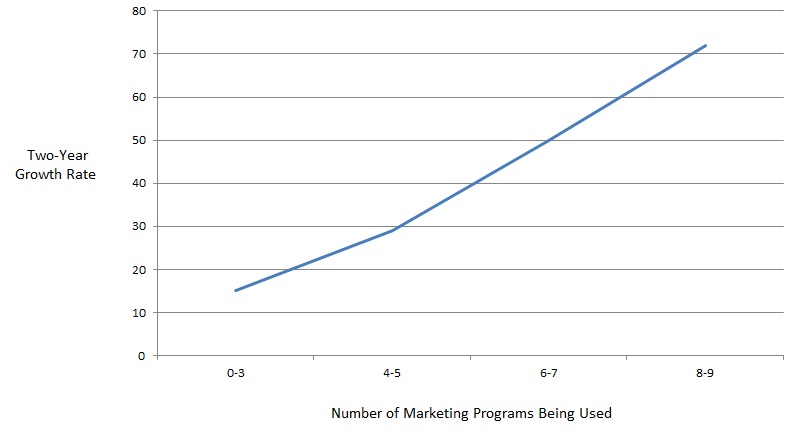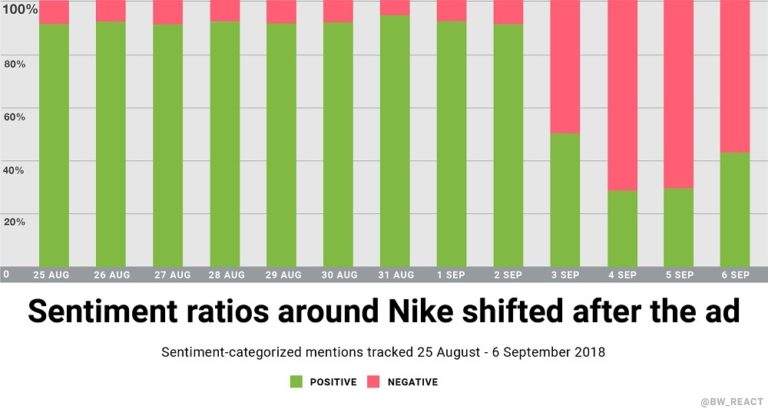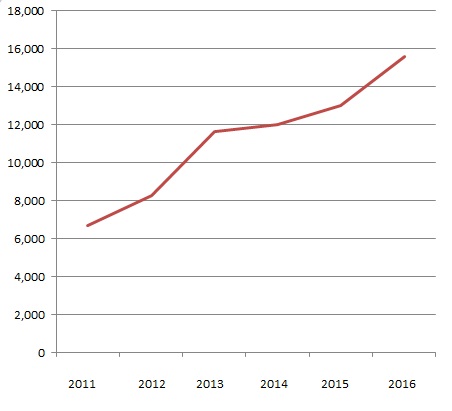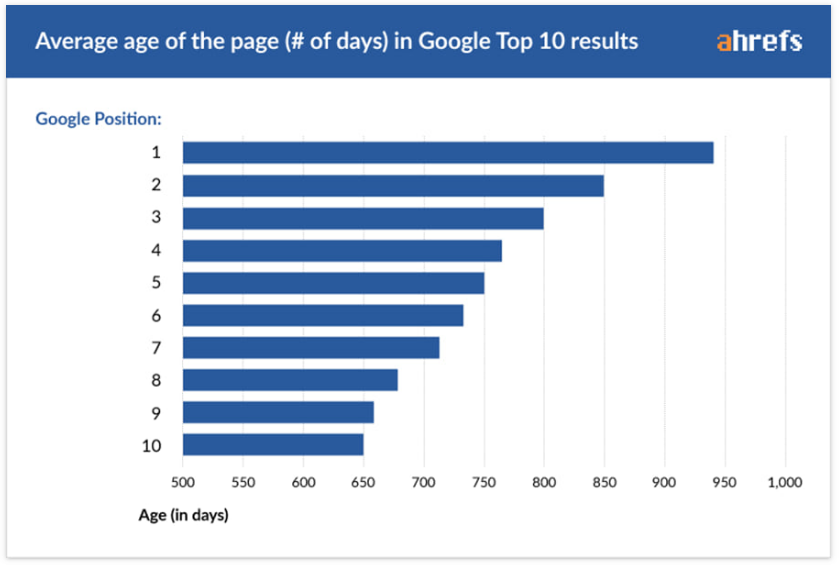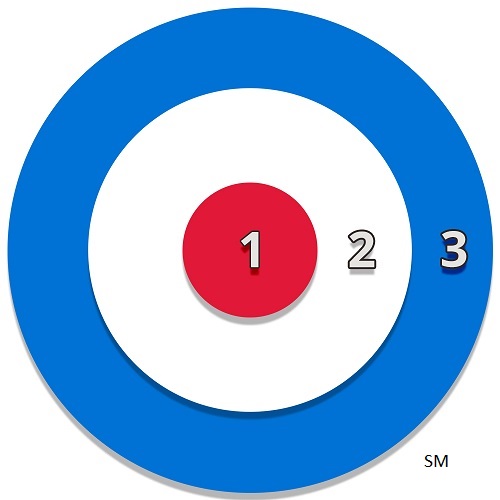This post was originally published on the Spin Sucks blog.
A few years ago, HubSpot, creators and prime evangelizers for inbound marketing, used the tagline:
If you have more money than brains, use outbound. If you have more brains than money, use inbound.
Since then, they’ve spent hundreds of million dollars on their inbound marketing.
And, as I wrote last year, their customer acquisition costs (the average cost of a new customer) has more than doubled in the last five years.
If your budget is limited (whose isn’t?) and you want cost-effective marketing, use bullseye marketing.
Bullseye marketing is the strategic approach I’ve been developing over the past several years (which I describe in more detail in my new book).
It breaks the launch and scaling of company marketing into three phases, working from the center of the bullseye out:
Phase One: Fully Exploit Your Existing Marketing Assets
Every company that’s been around for a few years has what I call “marketing assets.” But few are taking full advantage of them. These assets include:
- Customers: By talking to customers and listening, rather than always selling to them (or even worse, ignoring them) companies can learn what their customers really want and how to serve and market to them better. Growing existing accounts is also five to 25 times less expensive than closing new ones. But many companies focus too much on new customer acquisition.
- Website: Companies need to have clear and compelling messages on their websites. They also need to have calls-to-action and effective conversion devices. On most websites,99 percent of visitors come and go without the company knowing who they are or what they want. It’s a lot faster and less expensive to double the number of website leads by improving the site than by doubling the number of people coming to the site.
- Email lists: When I talk with SMB prospects I’ll ask “How many email contacts do you have?” They may answer 9,000 or 22,000 or more. Then I ask, “How often do you email them?” And they usually respond, “Oh, at Christmas.” Email marketing is the 500-pound gorilla of digital marketing; consulting firm McKinsey estimates that it is 40 times more effective than social media for customer acquisition. I believe it. You can integrate your email with social media ads by uploading your list to Facebook or LinkedIn. And then you target those ads to those people on those platforms.
- Remarketing: Remarketing ads are those ads you see after you visit a website. For example, you look at a book on Amazon and then start to see ads for it on other sites. They are highly effective because the audience you’re targeting already knows about you and cares enough to have visited your website. They are also usually quite inexpensive.
- Sales and marketing collaboration: In some companies, it takes days if not weeks for good leads to go from marketing to sales. And they may or may not act on them. Companies who cut that time to minutes can dramatically improve sales results.
These programs are inexpensive, and you can implement all of them in a matter of a few weeks or months.
It doesn’t cost much to listen to your customers.
On platforms like MailChimp and Constant Contact, you can repeatedly email a list of 10,000 contacts for less than $100 a month.
And it doesn’t cost much for sales and marketing to start working together better, too.
Not exploiting marketing assets is like putting cash under the mattress rather than in a high-growth stock.
These marketing assets are uniquely valuable because they are yours and yours alone.
When you get into other programs in Phase Two and Phase Three, competitors can bid up the cost of AdWords keywords or make it more difficult for your content to get a high search rank.
But they can’t do anything to prevent you from Phase One success.
Quick wins with Phase One programs also tend to build executive buy-in for the Phase Two and Phase Three programs.
Phase Two: Sell to People Who Want to Buy Now
It’s a big world. And your marketing will be very inefficient (aka expensive) if it’s not focused on people and companies in the market to buy very soon.
Most people start their buying process with research, and that means using search engines.
Properly-targeted Google and Bing search ads are a way to get in front of people seriously considering a purchase.
Of course, there’s more to a successful AdWords program than just keyword targeting.
They also require effective offers, well-written ads, landing pages that deliver on the promise of the ads, and remarketing.
There are other ways to know if someone is in-market, such as a surge in visits to your website and your the other content.
Some third-party companies aggregate and sell the search behavior across the web of people in companies.
So, for example, based on their search behavior they can say people in company X seem to suddenly be interested in a particular product.
Phase Two programs can be turned on quickly, too, and start producing results in weeks.
But they are generally more expensive than Phase One programs.
Phase Three: Cast a Wider Net
In Phase Three, you’ll engage in those long-range branding and awareness programs which include social media, content marketing, display ads (other than retargeting), influencer marketing, events, print ads, and so on.
Unless you’re in an industry where very few competitors are marketing (they exist and they’re a beautiful thing), or you have a very large budget, it may take a few years to get results from these programs.
But the inbound leads they generate tend to close at a high rate.
So in the long run, Phase Three programs can be very valuable.
The irony is, for many people these Phase Three programs are the definition of marketing.
If a company isn’t doing much marketing and decides to try it out, and they start with social media and content marketing, though, after several months they are likely to have very little if anything in return.
Their reaction will probably be, “We knew marketing wouldn’t work for us.”
But marketing can work if you use your brains before your money and apply the Bullseye Marketing approach.

